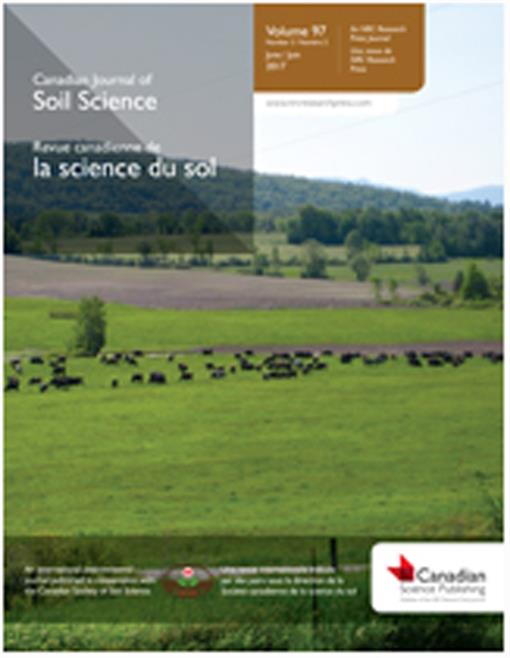Nitrous oxide (N2O) production in four soils with unique fertilization management histories — collected from long-term fertility treatments receiving no fertilizer, NPKS, PKS, and NPK in a 5 yr cereal–forage rotation — in response to three sources of added N [100 kg N ha-1 urea, NH4Cl, Ca(NO3)2] with and without co-addition of elemental S (20 kg S ha-1) plus a 0-N and 0-S control was investigated in a 7 wk laboratory incubation in a loamtextured soil at 40% water-filled pore space. In all soils, cumulative N2O emissions and apparent, cumulative, net nitrification were significantly higher following addition of urea compared with other N fertilizers with and without co-addition of elemental S. Lower N2O emissions were observed in soils without a history of long-term N fertilization following addition of urea compared with soils that had historically received urea. Because the preincubation soil total N levels were similar in soils with a history of urea application (NPKS) and without urea (PKS), the results of this investigation suggest that the higher N2O production in the NPKS soil may be the result of a priming effect and (or) changes in microbial community composition induced by long-term urea applications rather than differences in the long-term soil N balance.
How to translate text using browser tools
16 March 2017
Effects of long-term fertilization history and current N and S fertilizer applications on nitrous oxide production from S-deficient soils in a laboratory incubation
Mekonnen Giweta,
Miles F. Dyck,
Sukhdev S. Malhi
ACCESS THE FULL ARTICLE
It is not available for individual sale.
This article is only available to subscribers.
It is not available for individual sale.
It is not available for individual sale.
dénitrification des composés nitrifiants
Fertilisation prolongée
hydroxylamine pathway
Long-term fertilization
Nitrification
Nitrification
nitrifier denitrification





